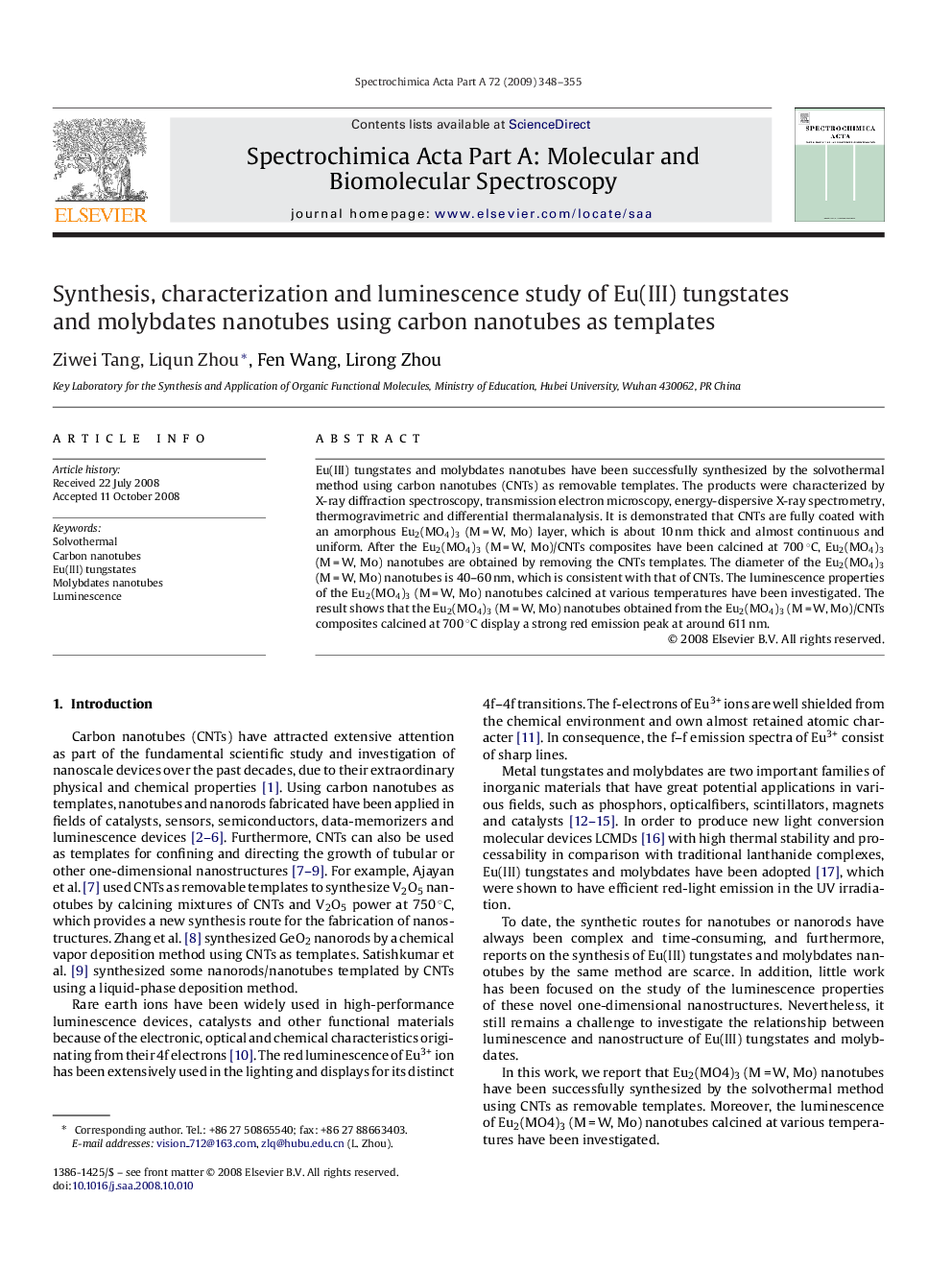| Article ID | Journal | Published Year | Pages | File Type |
|---|---|---|---|---|
| 1233639 | Spectrochimica Acta Part A: Molecular and Biomolecular Spectroscopy | 2009 | 8 Pages |
Eu(III) tungstates and molybdates nanotubes have been successfully synthesized by the solvothermal method using carbon nanotubes (CNTs) as removable templates. The products were characterized by X-ray diffraction spectroscopy, transmission electron microscopy, energy-dispersive X-ray spectrometry, thermogravimetric and differential thermalanalysis. It is demonstrated that CNTs are fully coated with an amorphous Eu2(MO4)3 (M = W, Mo) layer, which is about 10 nm thick and almost continuous and uniform. After the Eu2(MO4)3 (M = W, Mo)/CNTs composites have been calcined at 700 °C, Eu2(MO4)3 (M = W, Mo) nanotubes are obtained by removing the CNTs templates. The diameter of the Eu2(MO4)3 (M = W, Mo) nanotubes is 40–60 nm, which is consistent with that of CNTs. The luminescence properties of the Eu2(MO4)3 (M = W, Mo) nanotubes calcined at various temperatures have been investigated. The result shows that the Eu2(MO4)3 (M = W, Mo) nanotubes obtained from the Eu2(MO4)3 (M = W, Mo)/CNTs composites calcined at 700 °C display a strong red emission peak at around 611 nm.
